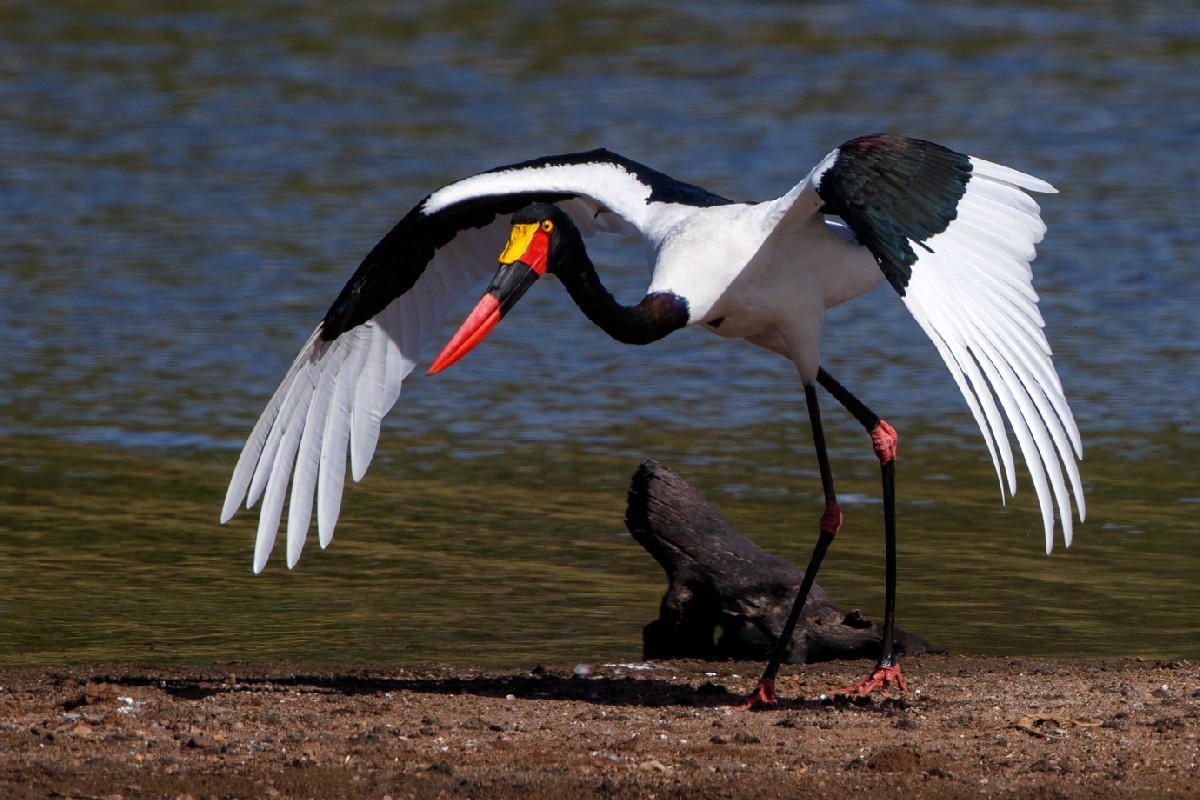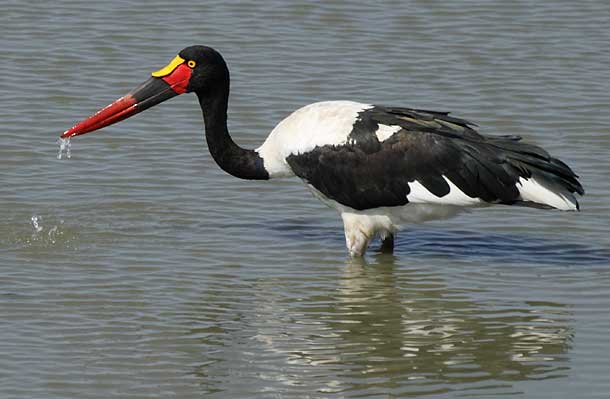Planning a birding Safari tour on your next trip to Africa…? Get ready to enjoy the Saddle-billed Stork in Uganda.
This African bird is a large wading bird in the stork family and is a close relative to the widespread Asian black-necked stork, the only members of the genus ephippiorhynchus. The Saddle-billed Stork is the largest and most handsome of several storks common in Uganda, up to 1.4m high, with black-and-white feathering and a gaudy red, yellow and black bill.

The bird is also represented in an ancient Egyptian hieroglyph
In this section of the Birding Safari Guide we share with you information about Saddle-billed Storks in Uganda in order to make your Bird watching tour to Africa even more fascinating.
Where to find the Saddle-billed Stork in Uganda
You will find these birds in singles and pairs in permanent freshwater swamps and wetlands of Africa.
In Uganda you will easily see these birds on game drive north of Murchison Falls and at Kazinga channel.
How you will know that you’ve seen a Saddle-billed Stork
You will see a very large black and white stork about 142 cm long, with a very long tri-colored bill, red and black with a yellow saddle and two small pendulous yellow or red wattles. The bird is spectacularly plumaged having the head, neck, back, wings and tail black, and the rest of the body and the primary flight feathers are also white. This African bird has very long legs with pink knees and feet.
The male Saddle-billed Stork has dark eyes, while the female is slightly smaller and has yellow eyes.
The immature birds are largely dingy grey-brown coloured with some white patches on the back, a blackish bill which lacks the saddle,and duller legs.
Like most storks, the Saddle-billed Stork flies with the neck out-stretched, not retracted like herons.While in flight, the large heavy bill is kept drooping somewhat below belly height, giving the bird a very unusual appearance.
Interesting Facts about Saddle-billed Storks
Saddle-billed Storks are usually silent birds, but when breeding the birds give descending squealing wheezes.
This Uganda bird breeds in marshes, forested water lands, other highlands and in tropical low lands.
He feeds mainly on fish, frogs and crabs, but can also feed on small birds and small reptiles.
He moves in a deliberate and stately manner as it hunts, in a way similar to the larger herons.
Book your next safari to Uganda with us via info@travel256.com

